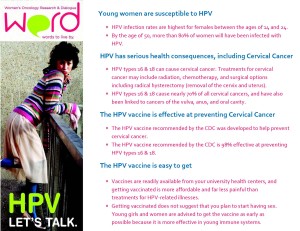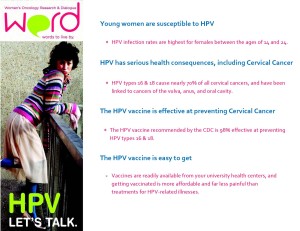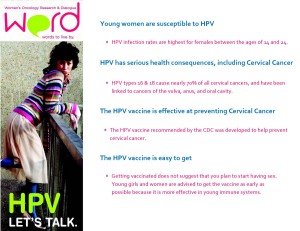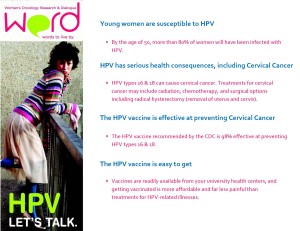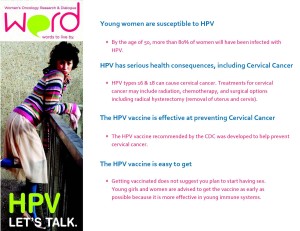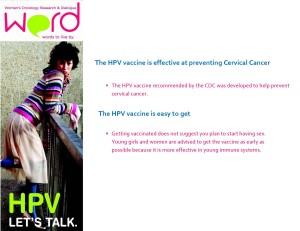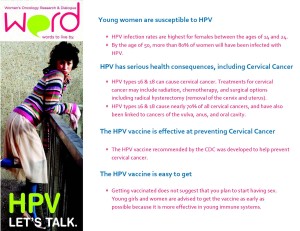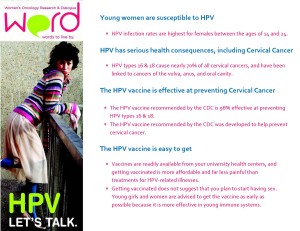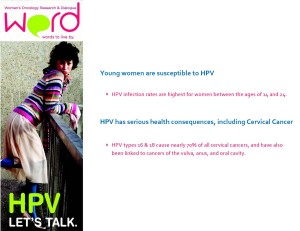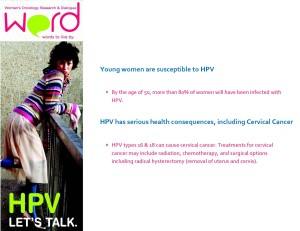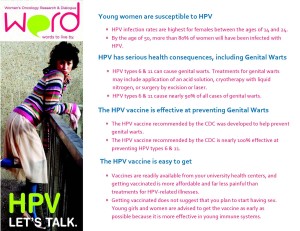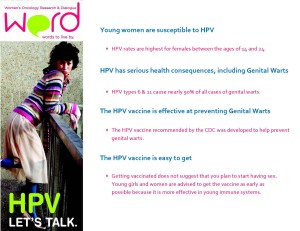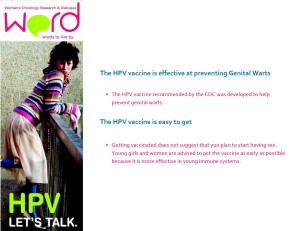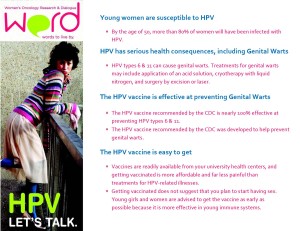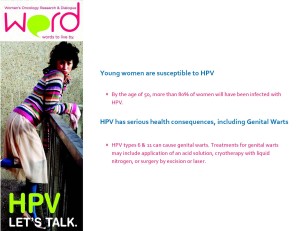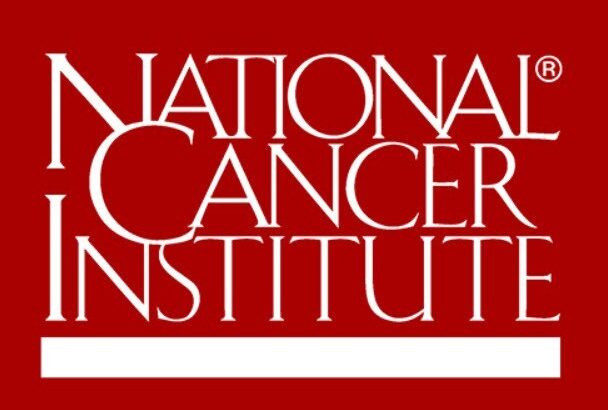In 2010, we won a subcontract on a Department of Defense/Telemedicine and Advanced Technology Research Center Grant. Our job was to conduct research to inform the design of an HPV vaccination campaign. To that end, we created experimental stimuli to test threat-to-efficacy ratio hypotheses at the heart of EPPM research. This required the creation of lots and lots and lots of stimuli – one for each ratio combination. Here they are, provided for your use and pleasure. Seriously. Feel free to use them.
Here’s the article citation:
Carcioppolo, N.,* Jensen, J. D., Wilson, S. E., Collins, W. B., Carrion, M., & Linnemeier, G. (2013). Examining HPV threat-to-efficacy ratios in the extended parallel process model. Health Communication, 28, 20-28.
